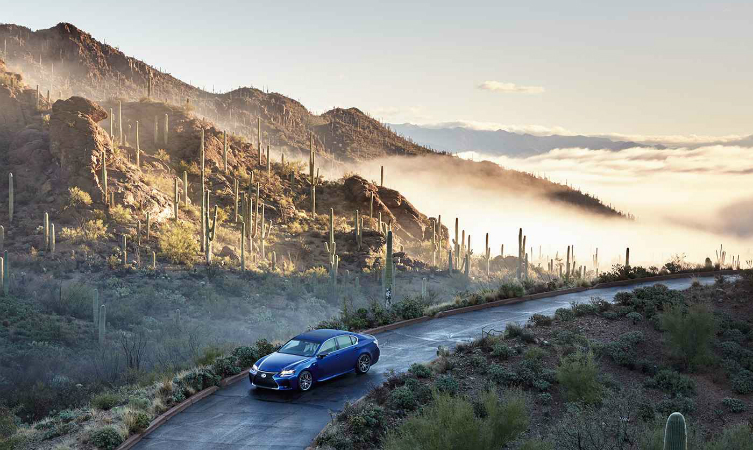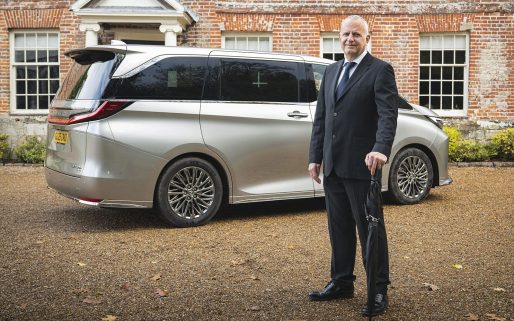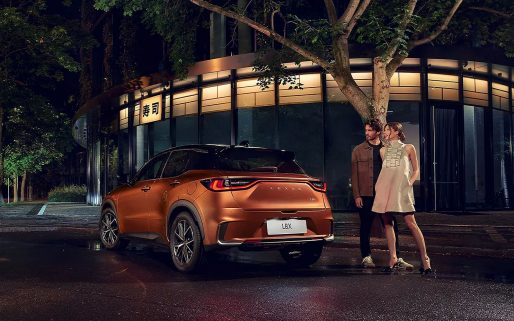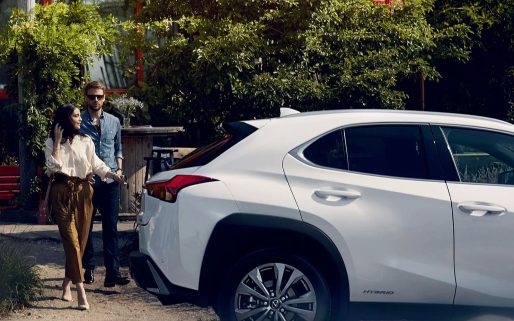Now that it’s officially spring, we’ve already started planning our summer holidays. To satisfy our wanderlust, we’ve rounded up some of the most stunning and inspiring places our cars have ever visited.
From the wilds of Norway to the stunningly sandy climes of North America’s Sonoran Desert, we’ve travelled the world in the lap of luxury to put our cars through their paces.
There’s more to come – stay tuned for Part 2.
Lexus GS F in the Sonoran Desert
The Lexus GS F stands out in the Sonoran Desert’s early morning mist. Developed to satisfy driving enthusiasts pining for a high performance four-door F series model, the vehicle will handle on the racetrack as well as it does on the road.
“The GS F is a sports car that appeals to connoisseurs,” says Yukihiko Yaguchi, head of GS F development.
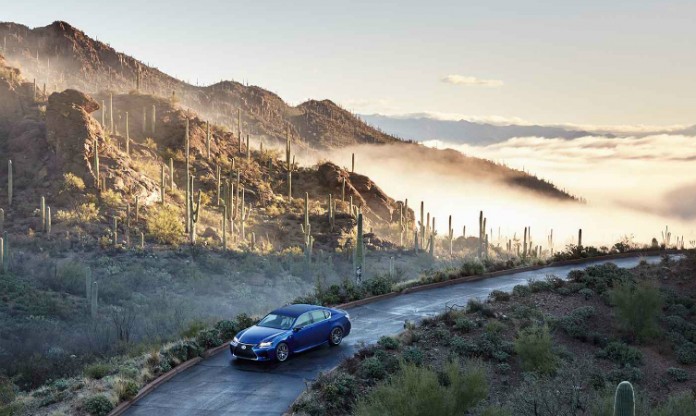
“The F concept is for drivers of all skill levels, and incorporates three elements: sound, steering response, and acceleration. All we’ve done with the GS F relates to that vision.”
The GS F, Yaguchi says, is the perfect mix between functionality and craftsmanship. “We had no intention of being crafty for the sake of it,” he says. “Everything in this car is there for a reason.” Here, the GS F comes to a halt on a desert road, revealing its elongated profile.
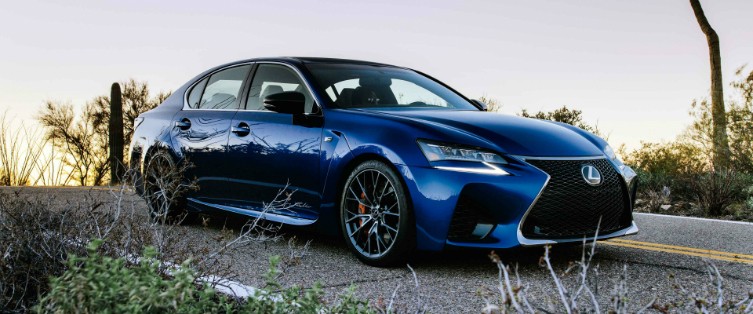 The GS F’s specially designed parts – the large front grille, the stacked quad diffusers, the rear spoiler – provide enhanced cooling and aerodynamic performance, and underline and embody the individuality of the F series.
The GS F’s specially designed parts – the large front grille, the stacked quad diffusers, the rear spoiler – provide enhanced cooling and aerodynamic performance, and underline and embody the individuality of the F series.
“This car will stand the test of time,” says Yaguchi, “because it is designed to appeal to the human senses.”
Who should drive the GS F? “Anybody who wants to enjoy driving,” Yaguchi says.
Text by Kosuke Kawakami; Photography by Jesse Chehak.
Lexus IS 200t at Sixth Street Bridge, LA
The Lexus IS was the brand’s most popular saloon. Then along came its more powerful and dynamic update. We take the new Lexus IS 200t to LA’s iconic Sixth Street Bridge.
What makes the IS 200t notable is what lurks underneath its bonnet: a 2.0-litre turbocharged gas engine that delivers 241 hp at 5,800 rpm. The engine, developed in-house by Lexus, was first incorporated into the popular Lexus NX, but in the new IS, a freer-flowing exhaust has helped enhance engine output.
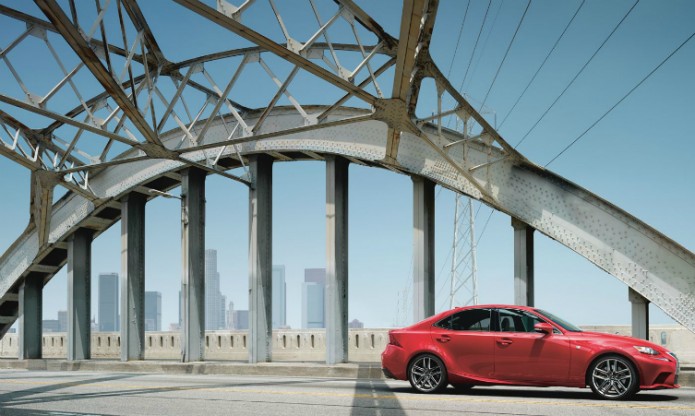
Delivering power to the car’s rear wheels (the IS200t is only available in rear-wheel drive) is a smooth-shifting, eight-speed transmission, with steering wheel-mounted paddle shifters that help the car sprint to 100 kph in 6.9 seconds.
But while the IS 200t exhibits a supple ride quality, seats five comfortably, and stays remarkably quiet on the open highway, the winding mountain road is where this car shines. Thanks to perfectly tuned suspension, the four-door saloon corners like a sports car, exhibiting near-neutral balance.
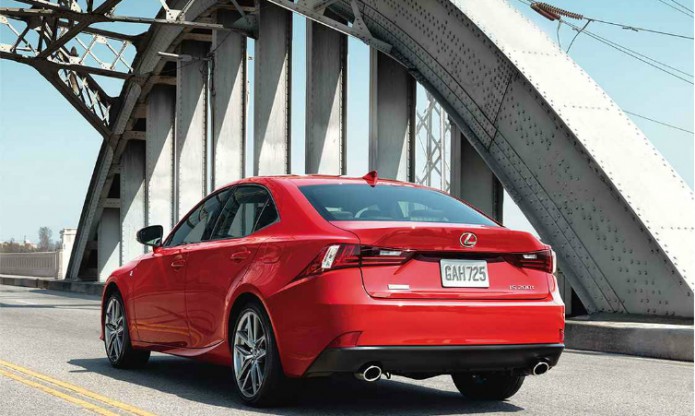
The model’s exterior and interior are visually identical to those of its stablemates – a good thing, judging by the praise that both the IS 300h and IS 350 received. The exterior is aggressive but elegant (Lexus’ trademark spindle grille takes centre stage), and the interior is appropriately luxurious, highlighted by comfortable sports-style seats and a handsome dashboard.
Text by Sam Mitani; Photography by Greg White.
Lexus IS 300h in Trollstigen, Norway
Trollstigen, a hair-raising section of Norwegian national road 63, is both a vital local thoroughfare and a popular tourist getaway. Photographer David Ryle traveled to Western Norway to capture the pass’ iconic bends.
Ørnevegen is surrounded by mountains – Kongen (the King), Dronningen (the Queen), and Bispen (the Bishop) – that offer experienced trekkers a variety of summit hikes and BASE jumpers a number of natural points from which to launch. 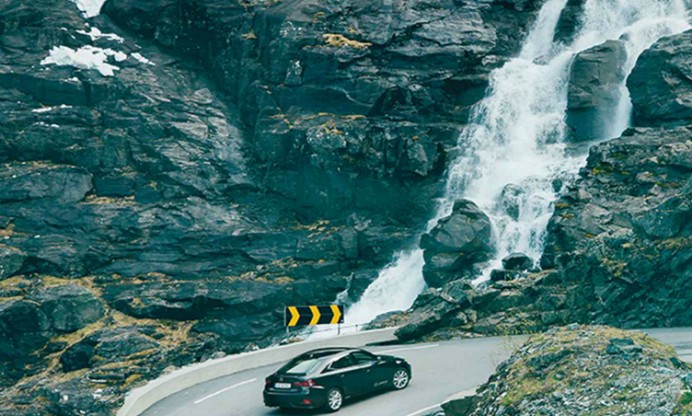
Trollstigen, which opened in 1936, winds through Norway’s Romsdal County, linking grand Lake Langvatnet to the Rauma River-crossing Sogge Bridge, 106 kilometers away. With a nine percent incline, the pass’ steepest stretch is called Ørnevegen (“Eagle Road”). It consists of 11 hairpin bends.
When the next-generation IS was launched in 2014, it established a new standard of driving performance for sports saloons. The IS 300h is the first Lexus hybrid to feature a battery positioned beneath the luggage deck board, contributing to a sportier driving experience by creating a lower centre of gravity and greater rear body rigidity.

Additional benefits include luggage capacity on a par with gas-engine models, fuel consumption of less than 4.3 I/km, and class-leading CO2 emissions below 100 g/km.
Photography by David Ryle.
Lexus RX 200t at the Takizawa dam, Japan
The all-new Lexus RX is bigger, bolder, and more dynamic than its forebears. We took it to the hulking Takizawa dam in eastern Japan to put it through its paces.
The RX’s most dramatic angle is the front, where an emboldened version of Lexus’ trademark spindle grille commands immediate attention. In fact, the front features a completely new fascia, highlighted by a confident chrome-plated border and triple L-shaped LED headlamps. There are also redesigned fog lamps, and bold front bumper flares.
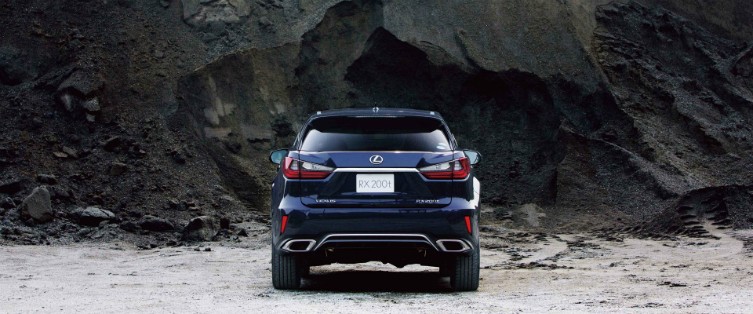 Lexus designers went beyond conventional notions of styling for the new RX, producing a sporty yet elegant look defined by sharp lines and stark colour contrasts. The black section on the two-tone C-pillar creates a floating roof appearance, while the sumptuous cabin exudes a strong sense of spaciousness, thanks in part to a new configuration and the texture of the high-quality materials. The centre console features the Remote Touch Interface with new side Enter buttons that enhance operation.
Lexus designers went beyond conventional notions of styling for the new RX, producing a sporty yet elegant look defined by sharp lines and stark colour contrasts. The black section on the two-tone C-pillar creates a floating roof appearance, while the sumptuous cabin exudes a strong sense of spaciousness, thanks in part to a new configuration and the texture of the high-quality materials. The centre console features the Remote Touch Interface with new side Enter buttons that enhance operation.
Meticulously crafted, the jewel-like taillights of the high-grade RX highlight a totally restyled end. The LED turn signal lights are sequential: meaning they illuminate in order from the inside to the outside, conveying the change in direction of travel.

The flowing roofline of the RX characterises its elegant wind-cutting shape, while the spoiler mounted to the roof and the chrome exhaust tips convey its sporty nature.
Armed with a distinctive design inside and out, the restyled RX redefines the luxury SUV segment. A new turbocharged 2.0-litre inline-4 engine, intended for select markets, joins the reengineered 3.5-litre V-6 and hybrid power train. The four-cylinder power plant has been tuned to provide powerful low-end torque and excellent fuel economy. Other high-tech features include direct injection and enhanced thermal efficiency.
Text by Sam Mitani; Photography by Mikio Hasui.
Lexus LS 600h L in California
A platinum Lexus LS 600h L is Jens Hoffmann’s trusty steed in the 80-mile journey up the winding California coast he is about to set off on. It’s a handsome car — with its raked spindle grille, it looks sporty, knowing and a little wry — and ready for the journey ahead.
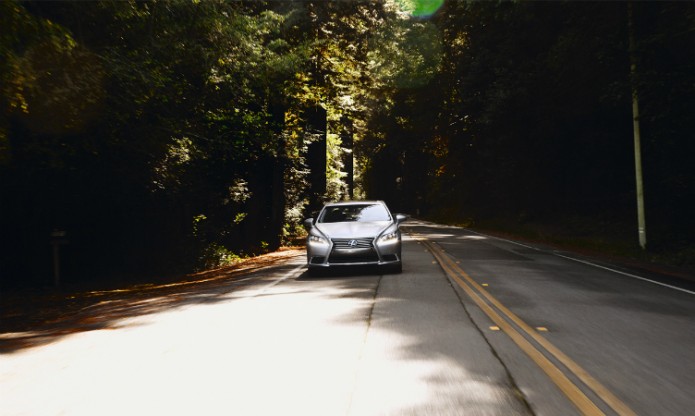
This is one of Hoffmann’s favorite drives: a short but challenging ride across the Golden Gate Bridge and into the countryside, where the hazards of wildlife, crumbling embankments and low visibility are all part of the charm. Having crossed the bridge, he’ll head to Stinson Beach, onto the forests in Samuel P. Taylor State Park and then farther up to Point Reyes, Tomales Bay and finally Bodega, a quintessentially California small town.
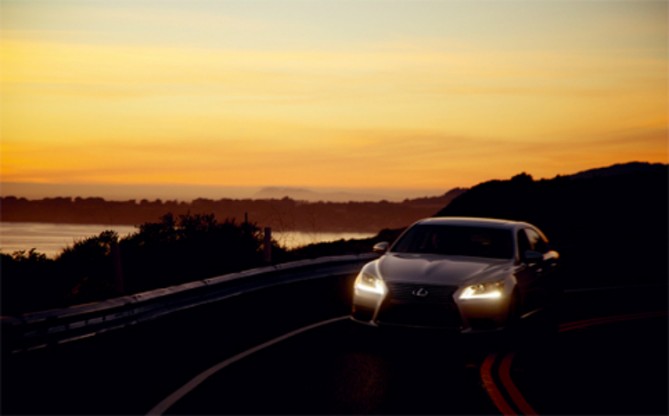
“It’s so soft, so quiet, there are no noises,” Hoffmann declares at the wheel. “I feel like I’m in first class on Lufthansa.”
The LS is a pleasure to drive along the cliffs and coasts of California — a smooth, curve-hugging ride, with amenities including climate-controlled seating, analog clock with a GPS function and bamboo detailing across the dashboard and the steering wheel. It’s a sophisticated way to observe the shifts in landscape, where even the mundane elements of suburbia — malls, gas stations, fast-food joints — are made dramatic by the sudden backdrop of mountains and coastline.
The car might be soothing, but the road isn’t. The trip north is a drive that demands cast-iron nerves and a steel stomach. The switchbacks are sudden, severe and guardrail-free. The LS handles the turns smoothly, without decelerating, the sight lines of its intelligent headlights pinned to the road. The view is more than worth the trouble.
Text by Jonathan Durbin; photography by Clément Jolin.
